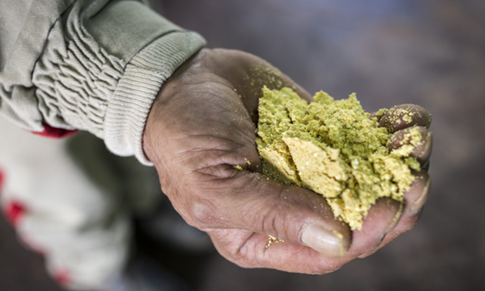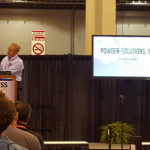8 Proven Safety Measures to Prevent Dust Explosions
A dust explosion at a plant can have catastrophic consequences for many powder processors, including loss of life. In fact, according to an analysis of data from the Occupational Safety and Health Administration (OSHA) by the Center for Public Integrity back in 2012, there have been 450 dust explosions since 1980 in the US alone causing the deaths of nearly 130 workers and the injury of over 800.
Accumulating dust at a powder processing plant is inevitable given the materials that are handled and the sheer size of the workplace. And because any solid flammable material can create an explosive dust, processing plants across several industries are at risk .
However, there are several proactive steps your powder processing plant can take to greatly reduce the chances of a dust explosion. To help you implement leading safety measures at your processing plant, below we dive into eight tips for preventing dust explosions.
1. Know Which Dusts Are Combustible
Before you can prevent a dust explosion, it’s helpful to know which of the materials you are working with can create combustible dust. For example, if you work with metal, food, or plastic powders, odds are your facility is producing combustible dust. If you aren’t sure whether or not a dust in your plant is combustible, you need to do some research.
Start by reviewing OSHA’s Material Safety Data Sheet (MSDS) and researching the combustible properties of your bulk solid. Then use OSHA’s fact sheet on combustible dust to determine whether your product fits into one of the following categories: agricultural products, dusts, carbonaceous dust, metal dusts or plastic dusts. Uncovering this information will allow you to make the right equipment choices and employ the proper prevention methods.
In addition, identify which areas of your processing plant handle these flammable materials. Combustible dust is most likely to form in areas of the plant where the material is transferred in large volumes. Once these high-risk areas are identified, it’s time to communicate your findings to employees and contractors.
Read: How to Safely Convey Combustible Bulk Solids
2. Train Your Employees
Part of implementing safety measures is making sure your employees are informed of the hazards and dangers they may face while on the plant floor. In relation to combustible dust, it’s important that your employees and contractors understand where dust explosions might occur, how to prevent them, and what to do in an event of an emergency.
Inform your employees of the danger of combustible dust and educate them on how your plant is working to minimize the risk. It is critical that employees are trained before they assume their responsibilities, so make sure this training is occurring early on in your training process. Furthermore, provide employees with a documented version of the training so they can refresh their knowledge of procedures if needed.
3. Perform Regular and Thorough Cleaning
One of the most important steps in dust explosion prevention is cleaning. Dust explosions cannot happen if there is no dust to explode. The most effective way plants can remove hazardous combustible dust is through regular, thorough cleaning.
To remove combustible dust from your processing plant, clean your identified high-risk areas and adjacent production lines at regular intervals. Because dust is most likely to build up in hard to clean places, make sure your teams are cleaning the hidden and obstructed areas of your facility. This means cleaning suspended ceilings, ventilation ducts, the tops of pipes, and other hard-to-reach places.
4. Implement a Hazardous Dust Inspection and Control Program
How will you know if your facility has been thoroughly and regularly cleaned? Without a system for inspection, testing, housekeeping, or control in place, you may never know if your plant is effectively removing combustible dust.
To ensure that combustible dust is being removed from your processing plant, establish a system for inspection and control. Designated employees or managers should regularly check high-risk areas for dust accumulation. If the dust is thick enough to see on surfaces, employees will need to up their cleaning game.
5. Use Cleaning Methods That Do Not Generate Dust Clouds
One of the five catalysts for creating a dust explosion is the dispersion of dust in the air. The more dust is dispersed in the air, the more fuel for the fire you are spreading throughout your processing plant. Because of this, it’s important that your cleaning methods do not encourage the dispersion of dust clouds. This is especially important when cleaning dust near ignition sources.
To clean your plant with minimal risk of fire or explosion, it is critical that you do not use compressed air, fans, or brooms for cleaning. These methods only help to disperse clouds of dust to other areas of the plant. Instead, use cleaning methods like dust collection systems and central vacuum cleaning.
6. Control Ignition Sources
Dust explosions, in addition to needing combustible dust and oxygen, need to be ignited by a heat source. The more you can limit or remove sources of ignition from hazardous areas, the less likely a dust explosion becomes.
To minimize the risk of igniting a dust explosion, make sure you control the machinery that is used in your facility. Reduce the chance of sparks from static electricity by grounding or bonding your equipment. It’s also a good idea to post “No Smoking” placards throughout the plant to discourage smoking.
7. Use Specialized Cleaning Supplies
Not all cleaning equipment is able to handle the level of dust that accumulates in your facility. In fact, vacuums and other cleaning methods that aren’t industrial grade or equipped to handle heavy loads can become overheated and spark an ignition on their own.
To avoid creating a new ignition source with your cleaning routines, use vacuums that are certified for Class II conditions and won’t cause an ignition.
8. Install BFM® fittings
Manufacturing equipment oftentimes isn’t designed to handle the heat, pressure, and shear force of a dust explosion. Once such piece of equipment is the hose clamp system used in bulk powder processing systems. But luckily, this equipment can be replaced to handle and prevent dust explosions.
Equip your facility with BFM® fittings to prevent and contain dust explosions in your powder processing plant. The BFM® fitting is a flexible connector system that has a 100% seal, eliminating the possibility of combustible dust escaping. BFM® fittings are also extremely strong, meaning they greatly reduce the risk of a dangerous explosion under overpressure situations.
Take Your Plant Safety to the Next Level
Each of the safety and cleaning measures mentioned above will reduce the chances of your plant experiencing a dust explosion. To take your plant’s safety to next level, consider a dust explosion suppression system that can detect an explosion before it happens. To learn more, contact us for assistance in your facility.






